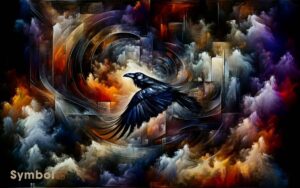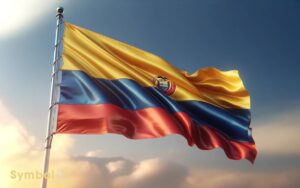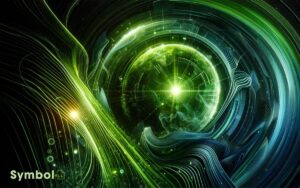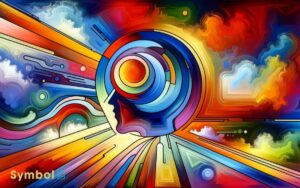La La Land Color Symbolism: A Detailed Guide!
In ‘La La Land,’ you’ll discover colors aren’t just aesthetic choices; they’re symbolic, crafting deep emotional undercurrents.
- Blue cloaks moments of introspection, hinting at dreams and desires lurking beneath.
- When you see red, think passion or conflict—Mia’s dresses and Sebastian’s club pulse with their ambitions and love’s complexities.
- Yellow beams optimism, pushing the characters towards their dreams, while green stirs with envy and growth.
- White layers the narrative with purity and transformation, paralleling the protagonists’ journey.
With these colors, ‘La La Land’ paints not just scenes, but feelings, thoughts, dreams. Exploring these hues will expose even greater depths in their story.
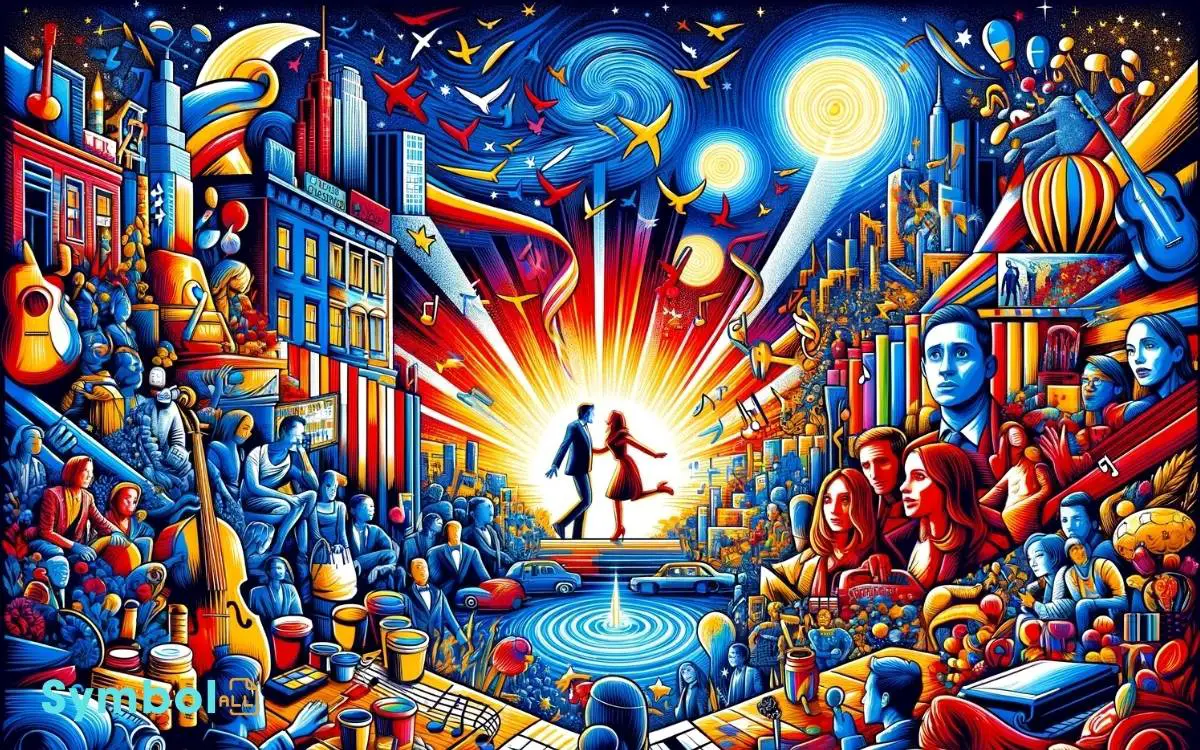
Key Takeaway
Color Symbolism & Significance in La La Land
| Color | Symbolism & Significance |
|---|---|
| Blue | Represents hope, sadness, and yearning. Mia’s frequent wearing of blue signifies her dreams and the melancholy of striving for them. |
| Green | Symbolizes growth, ambition, and change. Often associated with key turning points in the characters’ lives. |
| Purple | A mix of the realism of blue and the passion of red, indicating a blend of fantasy and reality in the characters’ lives. |
| Yellow | Signifies enthusiasm, joy, and new beginnings. Mia’s yellow dress is iconic of her optimism and the film’s overall tone. |
| Red | Represents passion, love, and intensity. It is prominent in scenes of romance and significant emotional moments. |
| White | Often used to depict simplicity and purity. It reflects moments of clarity or realization in the characters’ journey. |
The Significance of Blue
Investigating the significance of blue in ‘La La Land’ reveals its role as a symbol of dreams, introspection, and the ethereal connection between the protagonists.
You’ll notice blue’s presence during key moments of aspiration and reflection, subtly exploring your understanding of the characters’ inner worlds.
This color dominates scenes filled with hope and yearning, painting their dreams in a hue that’s both calming and profound.
As you explore further, you’ll see how blue frames the narrative’s most introspective segments, offering a visual cue to the audience about the characters’ contemplative states.
It’s a deliberate choice, meant to evoke a sense of tranquility amidst their pursuit of ambitions. Through these layers, blue becomes a narrative thread, weaving together their individual stories into a shared tapestry of aspiration.
Red: Passion and Conflict
Diving into the vibrant hues of ‘La La Land,’ red emerges as an important symbol of passion and conflict, intricately tied to the film’s most dynamic and emotionally charged moments.
The use of red isn’t accidental; it’s a intentional choice that deepens the narrative, underscoring the intensity of the characters’ experiences and the stakes of their dreams and desires.
Consider how red plays a significant role in the film:
- Mia’s dresses: Symbolizing her burning passion for acting and the conflicts she faces in her career.
- Sebastian’s club signage: Reflects his love for jazz amidst the challenges of realizing his dreams.
- The red sunset backdrop: Marks a pivotal moment of romantic and creative union between the protagonists.
- Traffic lights and stop signs: Often appear during moments of decision, highlighting the internal and external conflicts faced by Mia and Sebastian.
Through these elements, red weaves a complex tapestry of passion and struggle, guiding the audience through the characters’ emotional landscapes.
Yellow: Optimism and Aspiration
As we shift our focus to the color yellow, it’s clear it embodies the film’s underlying themes of optimism and aspiration, mirroring the characters’ hopes and dreams.
Yellow surfaces at pivotal moments, symbolizing the characters’ pursuit of their dreams and the brightness of their ambitions. It’s not just a backdrop; it’s a narrative device that highlights their journeys towards fulfillment and success.
| Aspect | Significance |
|---|---|
| Mia’s Yellow Dress | Hope and new beginnings |
| Sunrise | A new day for dreams to flourish |
| Street Lights | Pathway to achieving aspirations |
This strategic use of yellow paints a vivid picture of aspiration. It’s a beacon guiding the characters through their trials, embodying the light at the end of their metaphorical tunnels.
Green: Envy and New Beginnings
While yellow casts a glow of optimism and aspiration in ‘La La Land,’ green weaves a complex tapestry of envy and renewal, reflecting the nuanced emotional landscape the characters navigate.
The use of green denotes not just jealousy but also the burgeoning of new opportunities and beginnings.
Consider how:
- Sebastian’s envy of Mia’s success mirrors his own desires for musical recognition.
- Mia’s green dress in key scenes underscores her growth and renewal as she pursues her dreams.
- The lush green landscapes symbolize the fertile ground for their ambitions and the challenges they face together.
- Green lighting during pivotal moments highlights the tension between their dreams and the reality they live in, pushing them toward change.
This subtle yet powerful use of green enriches the narrative, making their journey more relatable and profound.
The Duality of White
As you explore the nuanced narrative of ‘La La Land’, you’ll notice white’s compelling duality. It’s not just a symbol of purity and simplicity; it also marks significant metamorphoses for the protagonists, serving as a canvas where their dreams and realities converge.
This juxtaposition invites you to question the illusion of purity white represents, while considering its role as a harbinger of change in their lives.
Whites Purity Illusion
In ‘La La Land,’ the use of white color serves a dual purpose, symbolizing purity and illusion, revealing deep layers of character and narrative complexity.
You’ll notice that white isn’t just a simple choice; it’s a strategic narrative tool that plays with your perceptions.
Here’s how:
- Emphasizing Innocence: White costumes initially highlight the protagonists’ innocence and dreams.
- Illusion of Perfection: Scenes dominated by white backdrops suggest a misleading perfection in their aspirations and relationships.
- Contrasting Realities: The starkness of white also underscores the eventual confrontation with reality, peeling away the illusion.
- Symbolic Disillusionment: As characters evolve, white transforms, suggesting purity isn’t always what it seems, adding a layer of disillusionment to their journey.
This nuanced use underscores the complexity beneath their seemingly straightforward dreams.
White as Transition
Exploring the duality of white in ‘La La Land’ reveals its role not only as a symbol of purity and illusion but also as a pivotal marker of evolution, guiding characters through their emotional and narrative arcs.
You’ll notice that white dominates scenes of metamorphosis, acting as a backdrop to moments of realization and change. This color’s inherent ambiguity serves to underscore the uncertainty of changes, mirroring the characters’ internal conflicts.
As Mia and Sebastian navigate their dreams and realities, white envelops their journey, subtly signifying shifts in their relationship and individual paths.
It’s this nuanced application of white that enriches the film’s visual storytelling, offering you a deeper insight into the characters’ evolution and the bittersweet nature of their pursuits.
Black: Reality and Despair
Delving into the use of black in ‘La La Land,’ you’ll find it symbolizes the harsh realities and depths of despair the characters face.
This color, often associated with the absence of light, mirrors their struggles and moments of personal doubt.
Here’s how black deepens the narrative:
- Contrasts Dream Sequences: Black grounds characters after vibrant dream sequences, emphasizing the gap between aspirations and reality.
- Signifies Professional Setbacks: When characters face professional rejections, black dominates their wardrobe, embodying their despair.
- Marks Emotional Turmoil: Scenes of heartbreak and conflict leverage black to underscore emotional intensity.
- Foreshadows Change: Black often precedes major plot twists, hinting at the necessity of overcoming despair to grow.
Through these layers, black’s presence in ‘La La Land’ enriches the story, reminding you that overcoming darkness is part of the pursuit of dreams.
Purple: Creativity and Royalty
In La La Land, purple’s historical significance isn’t just a nod to the past but a vibrant thread woven into the narrative, enriching the tapestry of the story.
You see its influence in the creativity of costume design, where purple garments symbolize the characters’ journey towards their artistic aspirations.
Additionally, the use of purple to depict royalty is subtly intertwined, elevating the characters’ status in their pursuit of dreams, mirroring the ambition and dignity traditionally associated with this color. This choice also subtly contrasts with the deeper, more grounded tones of maroon, which often symbolize passion and resilience. The color maroon symbolism and meaning further enriches the narrative, highlighting the characters’ unwavering determination and emotional depth as they navigate their journeys. Together, these hues create a vibrant palette that underscores both the aspirations and inner struggles at the heart of the story.
Purples Historical Significance
Comprehending the historical importance of purple reveals its profound connection with creativity and royalty, showcasing its prominent role in both ancient civilizations and modern narratives.
Here’s how:
- Scarce and Expensive: Historically, purple dye was incredibly rare and costly to produce, making it exclusive to the elite and royal figures, symbolizing power and wealth.
- Symbol of Wisdom: Linked to the divine and mysterious, purple often represents wisdom and dignity, traits highly valued by rulers and thinkers alike.
- Creative Influence: Artists and creators have long used purple to evoke imagination and fantasy, underlining its association with creativity and innovation.
- Cultural Significance: In many cultures, purple holds various meanings, from mourning to celebration, but its connection to nobility and artistic brilliance remains a constant theme.
Understanding purple’s multifaceted symbolism enriches your perception of its use in visual storytelling, including films like ‘La La Land’.
Creativity in Costume Design
How does the use of purple in costume design within ‘La La Land’ amplify themes of creativity and royalty, shaping our understanding of the characters’ journeys?
By integrating purple into key costumes, the designers subtly nod to the characters’ creative aspirations and their quest for excellence.
This color choice isn’t arbitrary; it’s a deliberate reflection of the characters’ inner worlds and their development throughout the film.
For instance, when a character dons purple, it’s often at a moment of artistic expression or personal breakthrough, underscoring their creative spirit.
This strategic use of purple not only adds visual depth but also enriches the narrative, allowing you to perceive the characters’ ambitions and growth in a new light.
It’s a demonstration of the thoughtful craftsmanship behind ‘La La Land’s’ costume design, where color becomes a narrative tool.
Royalty Depicted Through Color
Through the lens of ‘La La Land’s’ costume design, the color purple serves as a dual symbol of creativity and royalty, offering a deeper insight into the characters’ pursuit of their artistic and personal crowns.
Here’s how:
- Subtlety in Scenes: Purple hues subtly incorporated into scenes signify the moments characters embrace their creativity, aligning with historical associations of purple with nobility and artistic innovation.
- Character Development: As characters evolve, the introduction of purple in their wardrobe mirrors their journey towards achieving their dreams, akin to ascending to royalty in their respective fields.
- Contrast and Conflict: The use of purple also highlights the internal and external conflicts faced in the pursuit of greatness, showcasing the sacrifices made for artistic royalty.
- Final Triumph: In climactic scenes, purple signifies the culmination of their creative endeavors, embodying the ultimate achievement of personal and professional royalty.
The Role of Lighting
In ‘La La Land,’ lighting plays a pivotal role, meticulously crafted to enhance the film’s emotional depth and color symbolism, guiding viewers through the characters’ journeys.
The use of natural light, especially during the “Magic Hour,” highlights moments of pure, unfiltered emotion, contrasting sharply with the more vivid, artificial lights of the jazz clubs and movie sets, symbolizing the characters’ struggles and dreams.
| Scene | Lighting Type | Emotional Impact |
|---|---|---|
| Opening number | Bright, natural | Hope, beginnings |
| Jazz club | Dim, colored | Intimacy, passion |
| Audition scene | Soft, focused | Vulnerability, sincerity |
| Ending sequence | Mixed, nostalgic | Reflection, bittersweet resolution |
This strategic lighting design not only brings out the richness of the film’s palette but also deepens the narrative, making you feel right there with the characters, living out their highest highs and lowest lows.
Costumes and Character Arcs
Just as lighting underscores the emotional landscape of ‘La La Land,’ the film’s costumes play a significant role in charting the evolution of its characters’ arcs.
You’ll find that:
- Mia’s Dresses – Shift from simple, solid colors to vibrant patterns, reflecting her growing confidence and complexity.
- Sebastian’s Suits – Remain consistently classic, symbolizing his unwavering passion for traditional jazz. However, subtle changes in color and fit hint at his personal growth and compromises.
- Color Coordination – Moments of harmony between Mia and Sebastian are visually marked by complementary outfits, indicating their emotional synchronicity.
- Seasonal Shifts – Costumes adapt to seasons, metaphorically paralleling the characters’ journeys, with winter’s muted tones foreshadowing challenges and spring’s brightness celebrating rebirth and success.
Through these details, you’re invited to explore further into the narrative, appreciating how wardrobe choices enrich the storytelling.
Setting the Scene: Backgrounds
As you explore ‘La La Land,’ notice how the dreamy cityscapes don’t just serve as a backdrop; they actively shape the characters’ aspirations and the film’s narrative arc.
The colorful interiors are more than mere settings; they’re a mirror to the evolving moods and dynamics between the protagonists.
Meanwhile, the enchanting nighttime lights don’t just illuminate scenes; they spark the romance that drives the heart of the story.
Dreamy Cityscapes Influence
Through the lens of ‘La La Land,’ the dreamy cityscapes serve as a vibrant backdrop, intricately weaving the film’s themes of love, ambition, and the pursuit of dreams into the visual tapestry of Los Angeles.
You’ll notice how the city’s influence isn’t just a setting but a character itself, playing a pivotal role in the narrative.
Here’s how:
- Sunset Hues: The use of warm, golden colors during sunset scenes symbolizes hope and the golden hour of opportunities.
- Starry Nights: The clear, starlit skies represent the vastness of dreams waiting to be realized.
- Iconic Landmarks: Locations like the Griffith Observatory highlight the blend of personal dreams with the collective history of the city.
- Urban Sprawl: The panoramic views of Los Angeles underscore the journey and the distances one is willing to cover for their dreams.
This cityscape not only sets the scene but also amplifies the emotional resonance of the story, making you feel deeply connected to the characters’ journeys.
Colorful Interiors Reflect Mood
Delving deeper into the heart of ‘La La Land,’ you’ll notice how the film’s use of colorful interiors doesn’t merely serve aesthetic purposes but reflects the evolving moods and emotions of its characters.
As Mia and Sebastian journey through their aspirations and relationships, the colors around them subtly shift.
Vibrant reds and warm yellows often fill scenes of passion and ambition, creating an atmosphere of intensity and drive.
Conversely, moments of doubt and disappointment are draped in cooler blues and greens, setting a more introspective and somber tone.
This deliberate choice in coloration allows you to not just see but feel the inner workings of the characters, making their experiences more tangible and relatable.
It’s a nuanced visual language that speaks volumes, enhancing the narrative without a single word.
Nighttime Lights Spark Romance
Every scene under the night sky in ‘La La Land’ is meticulously crafted, with the glittering city lights igniting the burgeoning romance between Mia and Sebastian, setting an enchanting backdrop that mirrors their evolving relationship.
The nighttime lights serve multiple symbolic purposes:
- They highlight the dreamlike state of their connection, blurring the lines between reality and fantasy.
- The lights act as a metaphor for the spotlight on their aspirations and the visibility of their talents.
- They create a visual contrast that isolates them in their bubble, making their moments together more intimate.
- The changing intensity and colors of the lights reflect the fluctuations in their relationship, from bright beginnings to darker challenges.
This visual storytelling enriches your understanding of their journey, making every illuminated night a pivotal chapter in their love story.
Emotional Landscapes Through Color
La La Land’s masterful use of color transforms the cityscape into an emotional canvas, reflecting the inner worlds of its characters.
As they navigate their aspirations and relationships, the vivid hues around them underscore their joys, sorrows, and growth.
When Mia and Sebastian find themselves falling in love, the world bursts into a palette of warm, inviting colors, mirroring their blossoming romance.
Conversely, moments of despair and conflict are painted with cooler, muted tones, visually cueing their internal struggles.
This deliberate choice doesn’t just add aesthetic appeal but deepens your understanding of their emotional journeys. It’s a subtle yet powerful way the film communicates without words, inviting you to feel the characters’ highs and lows right alongside them.
Color Transitions and Story Progression
As you explore ‘La La Land,’ you’ll notice the film’s color transformations aren’t just aesthetic choices; they’re pivotal in illustrating the story’s progression and the characters’ evolving emotional landscapes.
These shifts, from vibrant to muted palettes, mirror the journey from dreams to reality, intensifying the narrative’s emotional impact.
Observing how the narrative color changes underscore the film’s thematic elements offers you a deeper understanding of the storytelling prowess behind the visual spectacle.
Evolving Emotional Palette
Throughout ‘La La Land,’ the film’s color palette shifts dramatically, mirroring the evolving emotions and relationship dynamics between its protagonists.
The colors evolve smoothly, yet profoundly, through several stages:
- Bright, Saturated Colors: These dominate early scenes, symbolizing the characters’ optimism and dreams.
- Soft Pastels: As romance blossoms, the palette softens, reflecting a tender, hopeful phase in their relationship.
- Earthy Tones: Challenges and reality set in, leading to more muted, earthy colors that signify maturity and complexity.
- Stark Contrasts: In the climax, sharp contrasts highlight the tension and ultimate resolution of their aspirations versus their relationship.
This evolving color palette doesn’t just add visual appeal; it deepens your understanding of the characters’ emotional journeys, making the film a richer, more immersive experience.
Narrative Color Shifts
Delving deeper into ‘La La Land,’ it’s clear that the film’s narrative progression is intricately tied to its shifting color palette, guiding viewers through the emotional and thematic arc of the story.
As Mia and Sebastian’s relationship unfurls, the colors evolve from vibrant primaries to more muted, realistic tones, reflecting the shift from dreamlike aspirations to the harsher realities of their ambitions and personal growth.
This subtle yet profound change in color usage not only enhances the storytelling but also serves as a visual metaphor for their evolving relationship and individual paths.
The Impact of Contrast
In ‘La La Land,’ contrasting colors not only enhance the visual appeal but also deeply influence the narrative’s emotional landscape and character development.
Here’s how:
- Contrast between dreams and reality: Bright, vibrant colors represent dreams and aspirations, while muted tones symbolize the harshness of reality. This contrast deepens your understanding of the characters’ struggles and victories.
- Emotional resonance: The stark contrast in colors evokes strong emotional responses, guiding you through the characters’ internal journeys.
- Character arcs: Color contrasts reflect the evolution of characters, marking significant changes in their lives and relationships.
- Visual storytelling: The use of contrast tells a story beyond words, conveying themes of love, ambition, and sacrifice, making the film’s message resonate on a deeper level.
Symbolic Uses of Color
Beyond merely enhancing aesthetics, the symbolic use of color in ‘La La Land’ deeply influences the film’s emotional tone and narrative, offering a nuanced insight into the characters’ journeys and the thematic essence of their dreams versus reality.
You’ll notice how the vibrant hues of Los Angeles set the stage for Mia and Sebastian’s aspirations; the bright colors mirror their initial optimism and passion.
Conversely, as their dreams face the harsh realities of life and compromise, the saturation fades, mirroring their internal struggles and the complexity of their choices.
This deliberate color evolution underscores the film’s exploration of the sacrifices required for ambition, the bittersweet nature of success, and the inevitable transformation of personal relationships in the pursuit of one’s dreams.
Through this lens, ‘La La Land’ uses color not just as a visual tool but as a storytelling vehicle, deepening your understanding of the film’s core messages.
Analyzing the Final Scene
The final scene of ‘La La Land’ serves as a masterful culmination of the film’s intricate use of color symbolism, revealing the ultimate fates of Mia and Sebastian’s dreams and realities.
In this scene, the colors play a pivotal role:
- Blue: Represents the melancholy of what could have been, as Mia and Sebastian share a knowing look.
- Gold: Symbolizes their achieved dreams, with Mia’s success in acting and Sebastian’s jazz club.
- White: Suggests a blank slate, indicating both characters moving forward from their past.
- Red: Shows the passion and love that remains, despite their separate paths.
Through these colors, you’re invited to reflect deeply on the complexity of their relationship, understanding that their love story is both a tale of success and a poignant reminder of sacrifice.
Conclusion
As you’ve journeyed through the kaleidoscopic world of ‘La La Land,’ you’ve seen how color paints not just the screen but the emotions and arcs of our characters.
Like a master artist blending hues on a canvas, the film uses color to guide you through a spectrum of feeling, from the heights of aspiration to the depths of heartache.
The final scene, a mosaic of emotions, showcases this symphony of shades, leaving you with a masterpiece that resonates long after the curtain falls.



